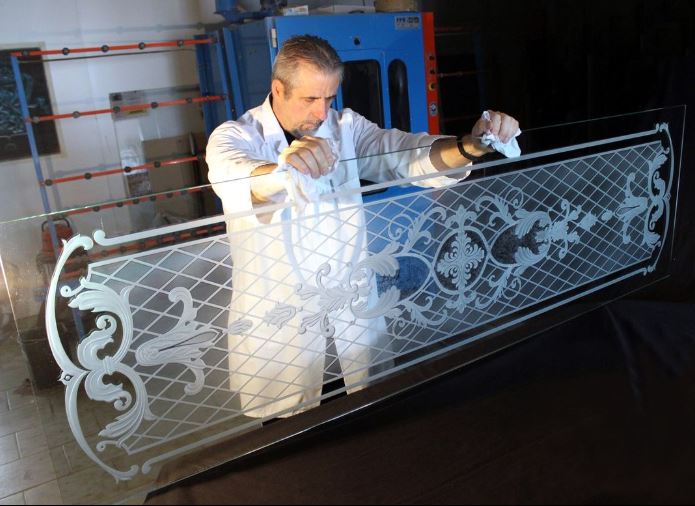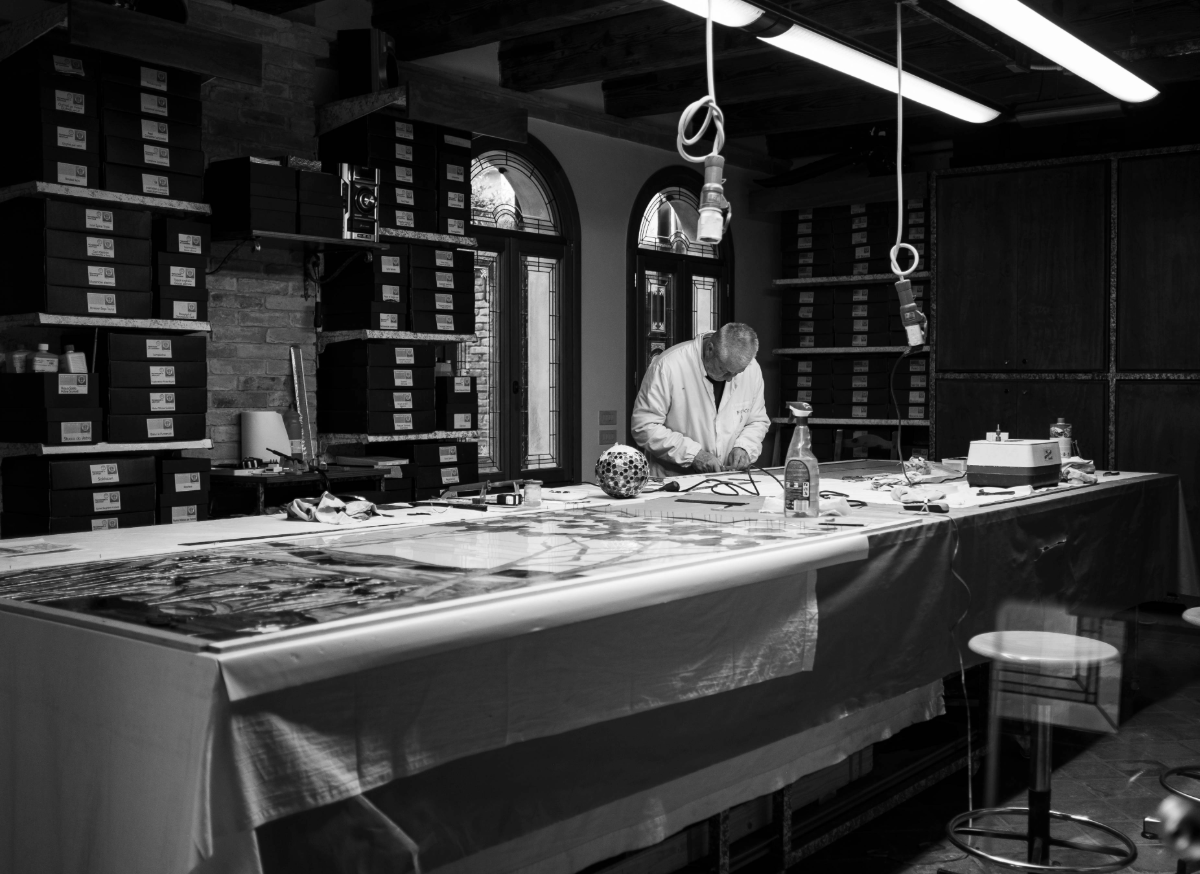In the modern era, dominated by mass production and digital technology, craftsmanship continues to shine like a precious gem in the fabric of our society. Its roots run deep in human history, going back to ancient times when craftsmanship was the norm and every object was shaped with care and dedication.
Craftsmanship has its roots in ancient civilisations, where artisans were respected members of the community, capable of transforming raw materials into works of art. From Sumerian pottery to Egyptian textiles, from medieval armour to Chinese porcelain, craftsmanship has shaped cultures and civilisations through the ages, bearing witness to human creativity and the desire for beauty and functionality.
Within crafts, a variety of forms and techniques manifest themselves, each with its own unique history and beauty. Woodworking, for example, has ancient roots all over the world, with craftsmen turning trees into furniture, sculptures and objets d’art. Weaving and embroidery, on the other hand, are traditions handed down from generation to generation, with threads and fabrics becoming true works of art through the skill of expert hands.
In the digital age, handicrafts are experiencing a new renaissance, with more and more people appreciating the value of the handmade and the desire to own unique and personalised items. Local craft markets and online platforms, such as VenetianMade, offer an opportunity for artisans around the world to showcase their talent and connect with passionate customers.
In a world where mass production and standardisation dominate, craftsmanship continues to be a beacon of creativity, authenticity and human connection. Every handcrafted object carries with it a story, a tradition and a piece of the heart of the craftsman who created it. Whether it is a hand-carved wood sculpture or a carefully painted ceramic vase, each handcrafted piece is a treasure to be celebrated and preserved for future generations. Main sectors in handicrafts:
Joinery
Carpentry is an ancient and precious art, handed down from generation to generation. Master carpenters work with passion and skill, creating furniture, sculptures and wooden ornaments that enrich our homes. In the Marche region, this tradition is particularly deep-rooted, and carpenters work mainly with precious woods such as walnut, cherry, chestnut and oak. Their works are true works of art, characterised by beauty and artistic value.
The carpenter’s work requires a wide range of skills, including wood cutting, machining, sanding, finishing and assembling. Each piece is made with care and attention to detail, transforming simple wood into extraordinary creations.
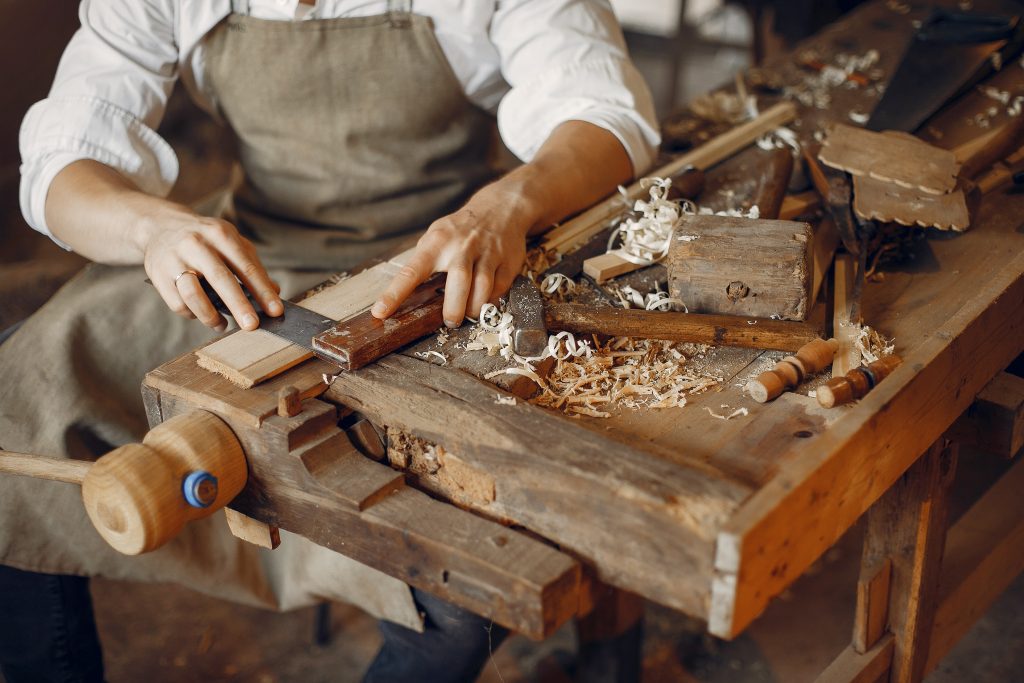
Ceramics
Over the years, ceramics has evolved, and the use of majolica (a glazing technique) began to spread thanks to the importation of technicians and master potters.
The objects produced by the workshops are varied and include:
– Jugs
– Bowls
– Plates
– Vases
A widely used decoration technique is that of the potter’s wheel, which allows floral and geometric motifs to be created. In the 20th century, craft production came to a standstill due to competition from industrial manufacturers. However, in recent decades, thanks to the efforts of local craftsmen and the growing interest in handicrafts, ceramic production in Appignano has been restored. Today, ceramic shops and workshops flourish again in the historic centre, and their products are highly appreciated by collectors of high-quality handicrafts.
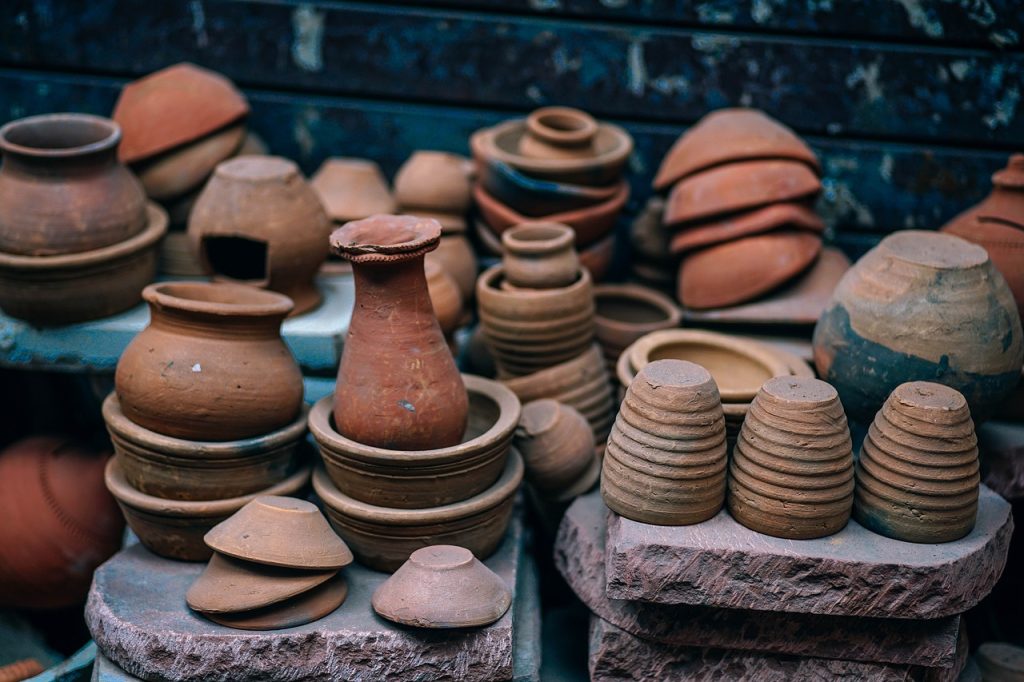
Precious metals
Handicrafts related to metals comprise several professional figures, each with specific skills. Let us see who they are:
Craftsman specialising in wrought metal art and decorative objects: This expert creates unique pieces using wrought metal techniques. His works can be sculptures, lamps, gates, or any object requiring craftsmanship and creativity.
Blacksmith: The blacksmith is a master in the art of metalworking. He or she forges, welds and shapes iron and other metals to create functional objects such as gates, railings, gratings and metal structures.
In short, they require a profound knowledge of materials, manual skills and creativity. Each piece made is a work of art in itself, the result of passion and craftsmanship.
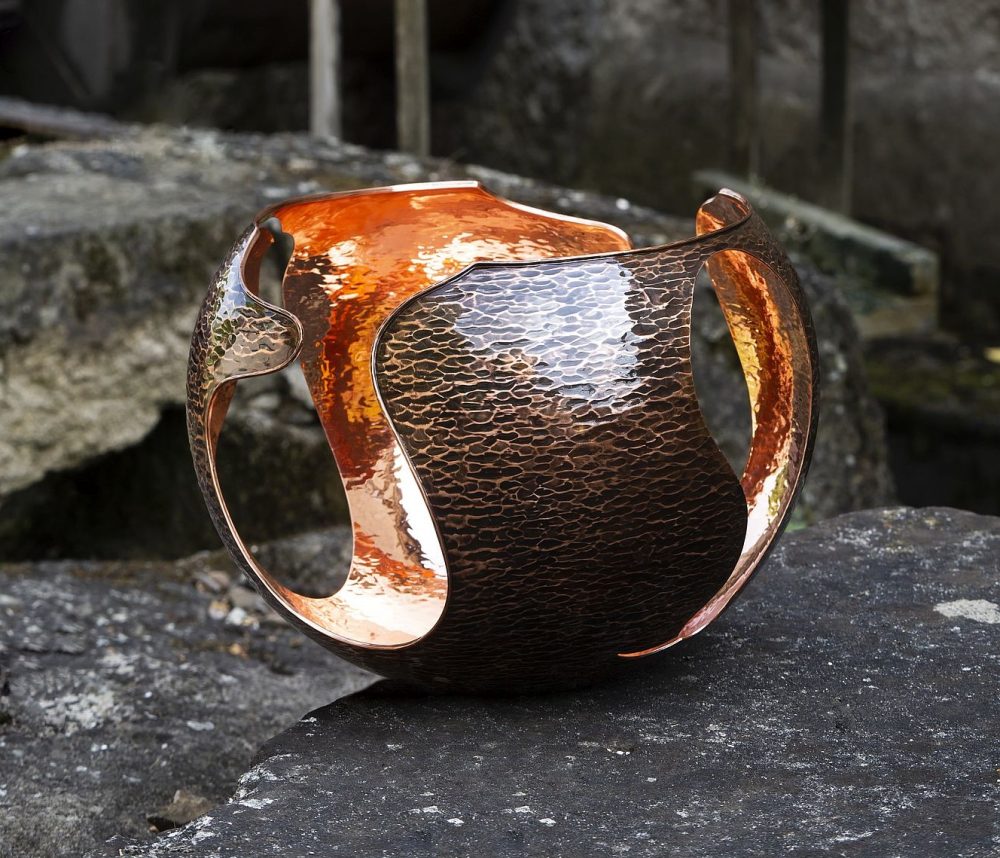
Fashion/Clothing
The clothing industry in Italy is world-renowned for its mastery of fine fabrics and sophisticated cutting and sewing techniques. One of the key roles in this industry is that of the garment maker. Let us look in detail at what garment making entails:
Selection of fabrics: The employee must carefully select the fabrics to be used for each garment. The selection takes into account quality, texture and appearance.
Pattern creation: This phase requires creativity and precision. It involves designing the garment patterns, considering fashion trends, consumer preferences and brand image.
Cutting: The cutter has to transform fabrics into specific parts for each garment. This operation requires skill in handling fabrics and following patterns.
Sewing: This is where sewing skills come into play. The different parts of the garment are assembled with precision, following the guidelines of the patterns.
Finishing: After sewing, garments undergo finishing operations. These include ironing, folding and packing. The final presentation is crucial to the appearance of the product.
Product assembly: Finally, all parts are joined together to create the complete garment.
This process requires an in-depth knowledge of materials, sewing and finishing techniques and a great attention to detail. In addition, it is essential to keep up with fashion trends and be familiar with different types of fabrics. Garment making is an activity that requires precision, attention and expertise, and the people involved must be well prepared.
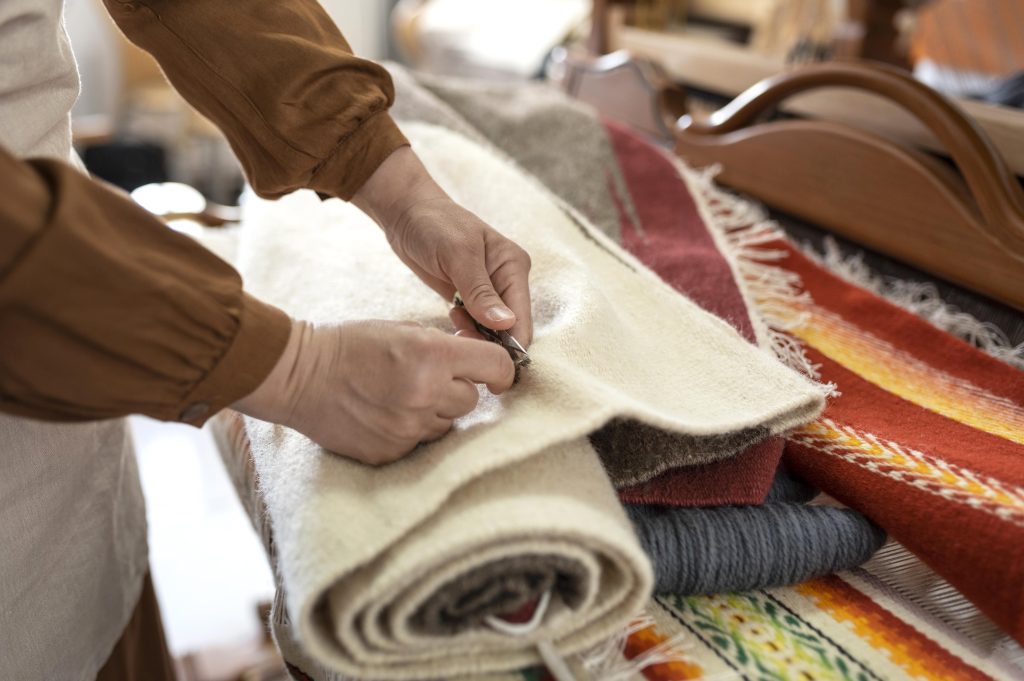
Artistic Glassware
The glass craftsman, also known as a glazier, is a highly skilled figure in the working of this material. Here is some detailed information on their role:
Installation and Repair: The glazier makes, assembles, installs, repairs and replaces glass elements both outside and inside buildings. These elements include door and window frames (doors, windows, skylights), glazing, parapets, balustrades, shower enclosures, mirrors and furnishing accessories such as shelves and glass cabinets.
Versatility of Glass: Glass is an incredibly versatile material. It is transparent, weather-resistant and insulating, making it very popular in construction, architecture and interior design.
Artistic Glass Processing: In addition to practical applications, there are glassmakers who specialise in artistic glass processing. These experts create designs on glass and make furniture, furnishings and decorative elements from glass and crystal. Their creations include display cases, custom-made stained glass windows, mosaics, tables, chandeliers, vases and other glassware.
Restoration of Antique Stained Glass Windows: Some glassmakers are also involved in the restoration of antique stained glass windows. These stained glass windows can be found, for example, in houses of worship or private residences.
